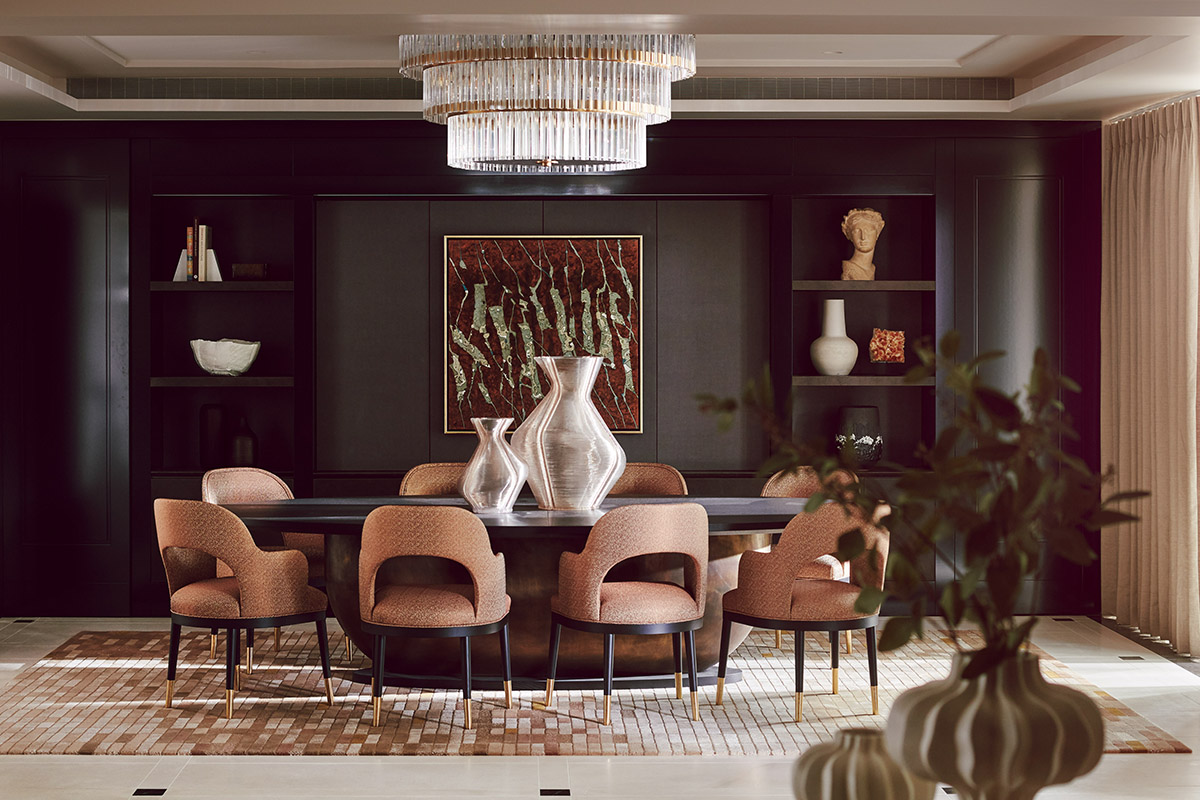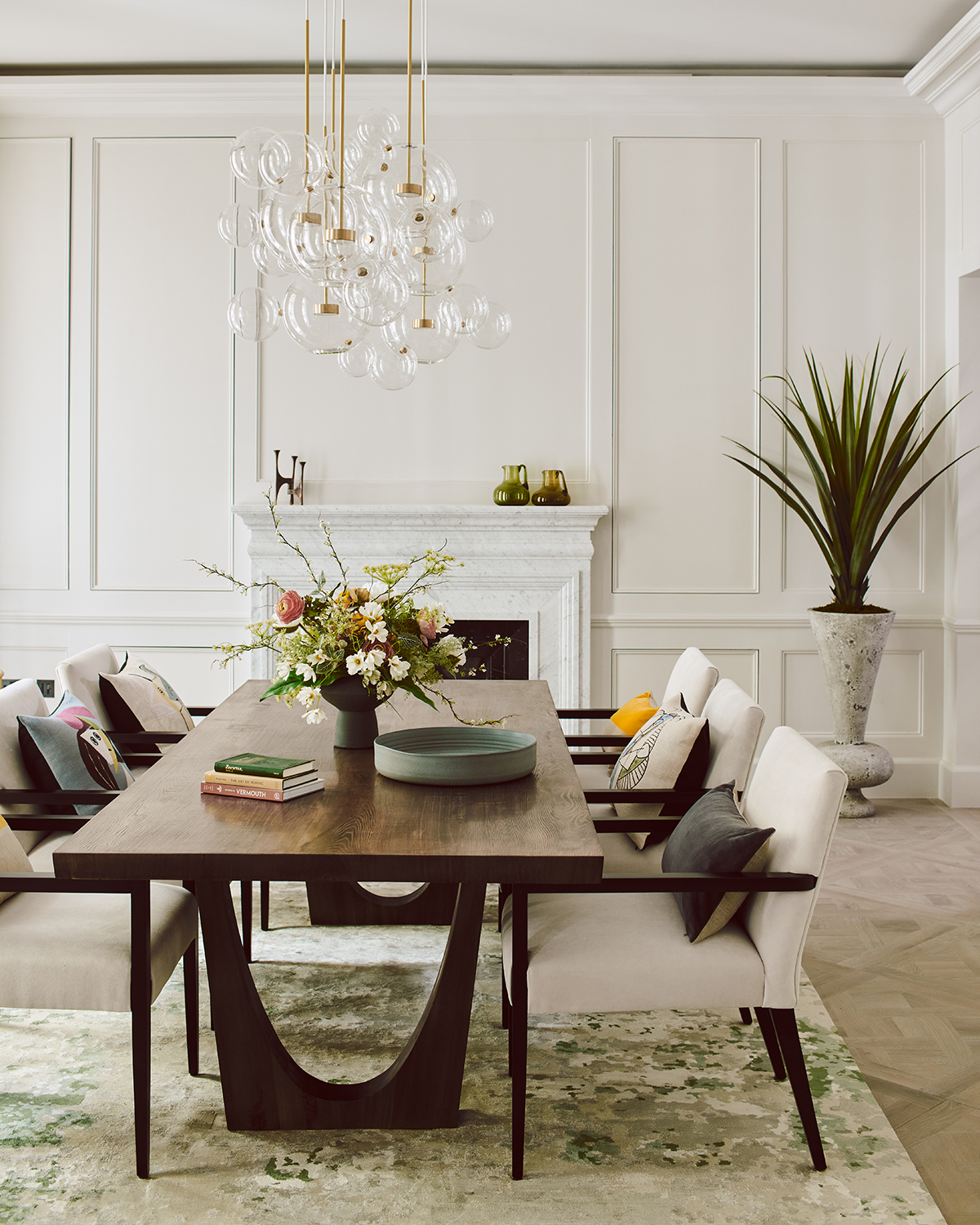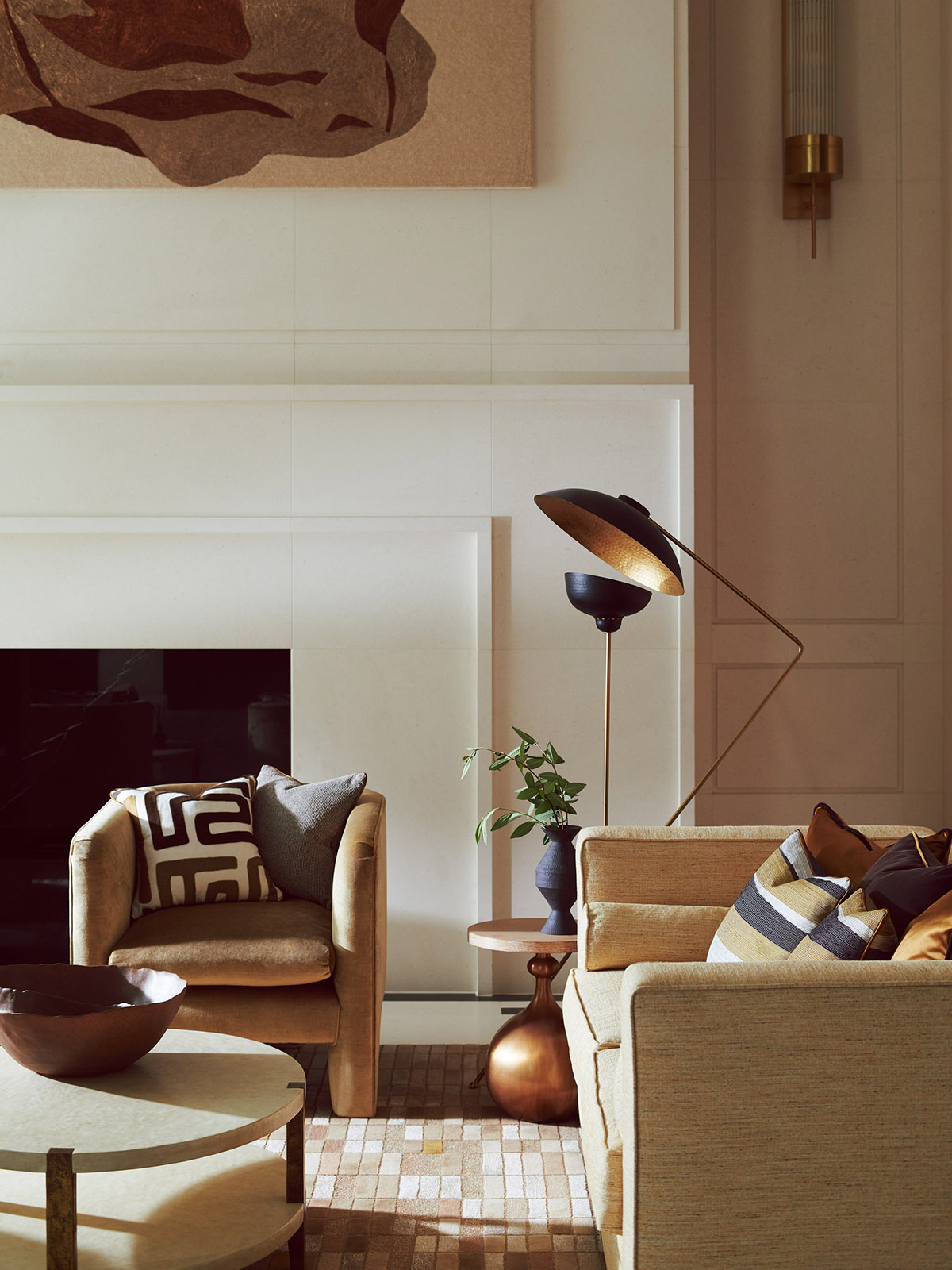
Chelsea Barracks, with spatial layout and interior design by Elicyon. Photo Michael Sinclair
An architect by training and an interior designer by trade, Charu Gandhi cites her multicultural upbringing as the source of her fascination with people and how they occupy space. To translate her design language to others, she founded design studio Elicyon in 2014, and has since completed super prime luxury residential projects in New York, Dubai, Shanghai, and London – to name just a few. Here, Gandhi speaks to LUX Contributing Editor, Samantha Welsh, about the importance of finding fluidity between disciplines and cultures, and her optimism about the future of women in design

Charu Gandhi
1. What are Elicyon’s chief design principles?
At Elicyon, we are led both by how space is used and a fine attention to detail. We also focus on how those can be executed differently for each project. Often you can walk into a project and know how the home would work best for the client. I have a strong spatial understanding that helps to guide the design scheme. What we aim to do is to make our clients fall in love with design, and embark on the journey of learning about materiality and craftsmanship when they work with us.
Follow LUX on Instagram: luxthemagazine
2. What questions do you ask when considering the design brief for a super prime residential scheme?
We have an extensive briefing process that’s about getting to know the client. We ask how each room is used differently by family members and at what times of the day. Designing a home is often about evoking a feeling: I always ask clients to think about a time they really enjoyed themselves – be it an experience in a restaurant or a holiday destination – and what they loved about it. They might remember that they loved the linen on a hotel bed, the details of a ceiling in their favourite restaurant or even the size of the bedside tables in a hotel room.

41-43 Beaufort Gardens, designed by Elicyon. Photo Michael Sinclair
3. How does Elicyon deliver projects globally?
We’ve delivered projects in every continent, and what it really comes down to is great planning. It’s paramount to understand the logistics of a project thoroughly, and often working with a strong local team has proved invaluable. They act as our eyes and ears on the ground. For each new location, we do a recce to understand the particularities, culture and to be familiar with the buildability (seeing what is physically possible to build locally).
Having worked internationally for many years, we have built up a solid black book of partners that we can rely on, from transport companies to logistics managers, the majority of which are based in London but have global reach.
Read more: Molori Designs Founder Kirk Lazarus on Ultra Bespoke Luxury
4. How did this cross-cultural appeal come about?
Having an international client base naturally means we are asked to help on projects in many different continents – we might start with their London home, and end up designing their homes in Dubai, LA and Shanghai too. It’s a reflection of how multicultural London is as a design centre.
Ultimately, however, it comes down to my upbringing. I have travelled extensively since an early age and was educated at an international school, so my school friends live in all parts of the world. I also have an innate interest in people and how they live and occupy spaces.

Chelsea Barracks, with spatial layout and interior design by Elicyon. Photo Michael Sinclair
5. What during your training most inspired your vision as an architect and designer?
My first year at the Architectural Association was my most formative year, led by a brilliant teacher, Julia Wood, who passed away too young some years after. She turned the notion of architecture on its head – and we explored concepts through dance, through sculpture and the human body, and she introduced us to a myriad of conceptual artists of the time. I remember being particularly struck by Rachel Whiteread’s work.
6. What do you think has changed for women in architecture in recent years?
There is no better time to be a woman in architecture: the playing field, from a London-centric view, is full of great women designers, thanks to groundbreakers like Zaha Hadid who cracked the mould. Nevertheless, there are worrying statistics of those who graduate as architects versus those still in the role 10 years on. In my mind, the UK needs to fix its childcare challenges, and only then will the female-led architecture and design ecosystem thrive.
I know the Royal Institute of British Architects (RIBA) and Architects Registration Board (ARB) have task forces working on it, and that I too have a responsibility as a leader to grow and build female teams. I am proud to say that at Elicyon our senior leadership team is entirely female. As an industry, however, we must endeavour to always do better.
Find out more: Elicyon.com








